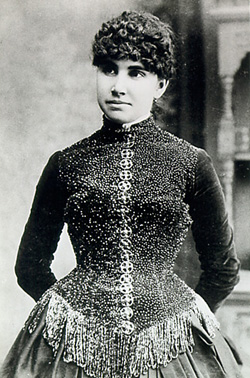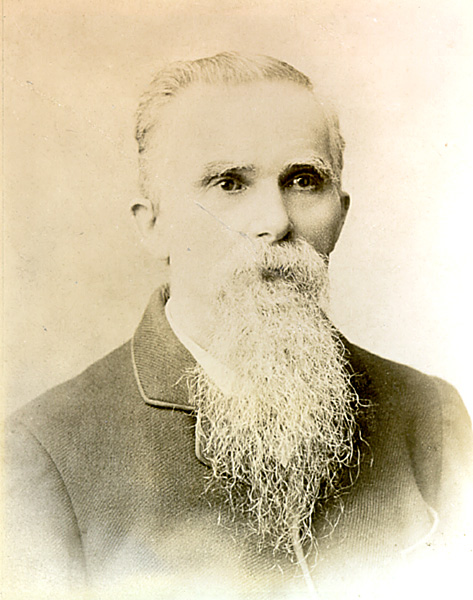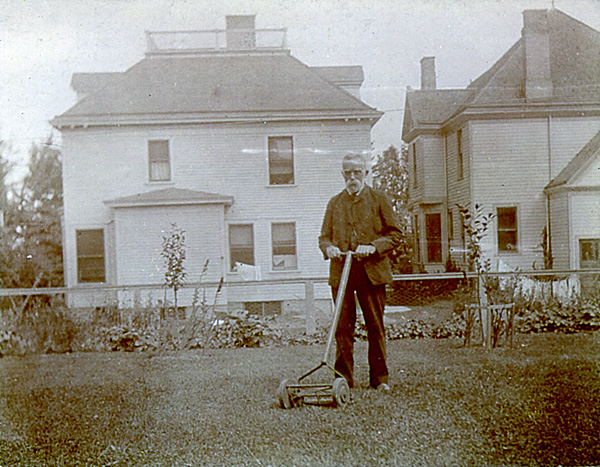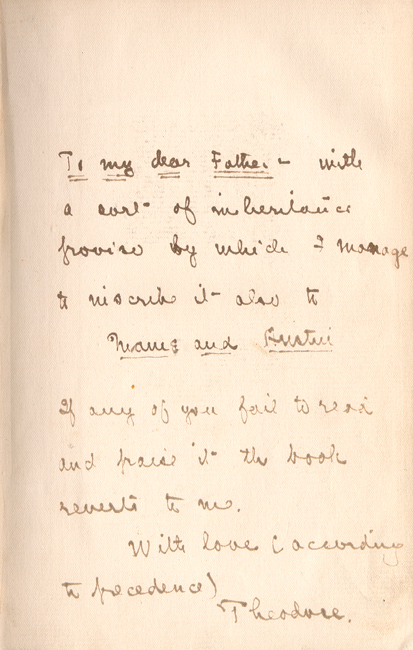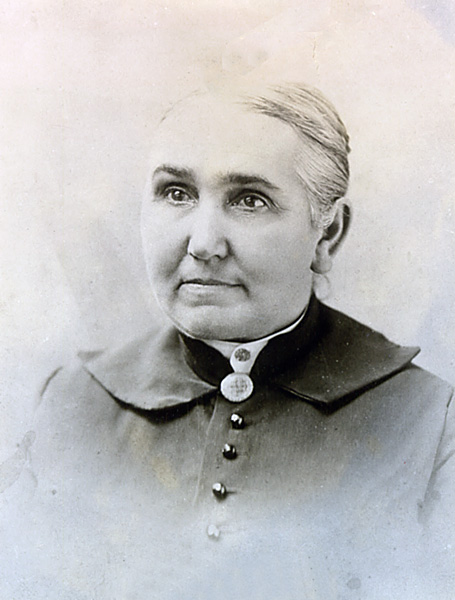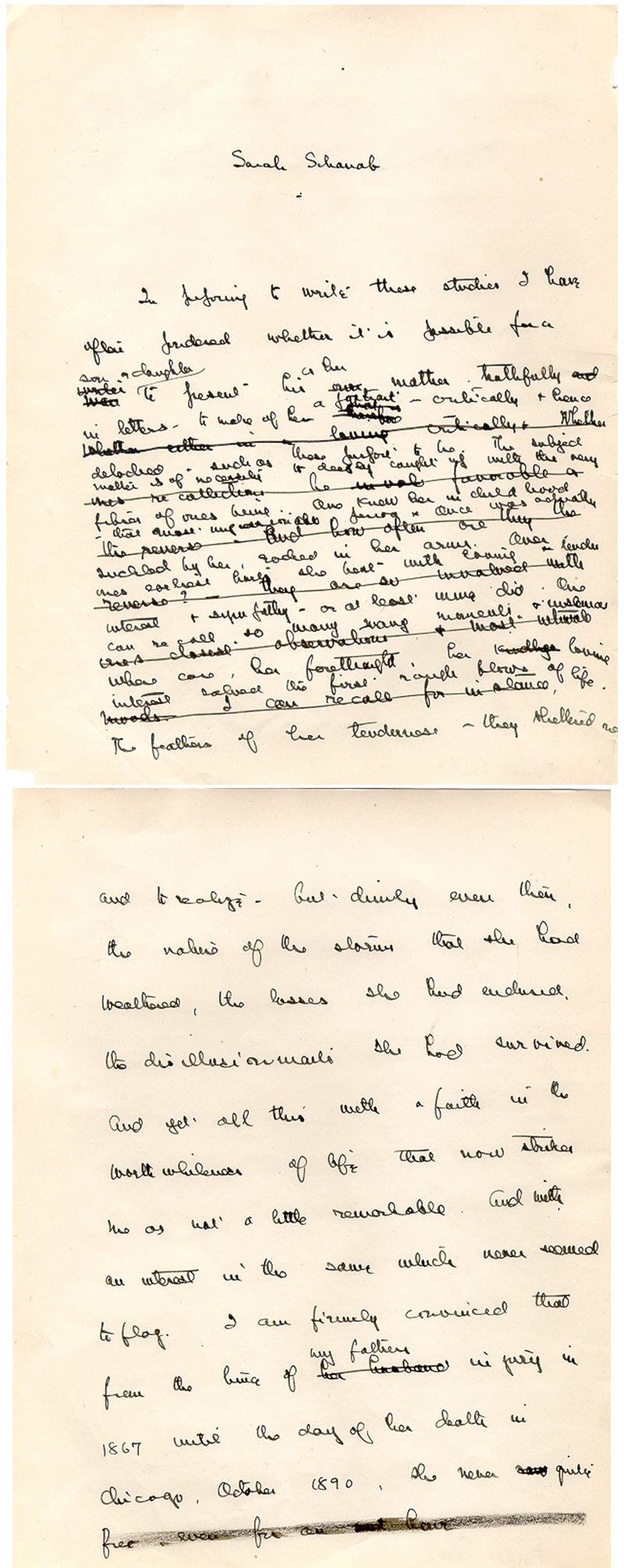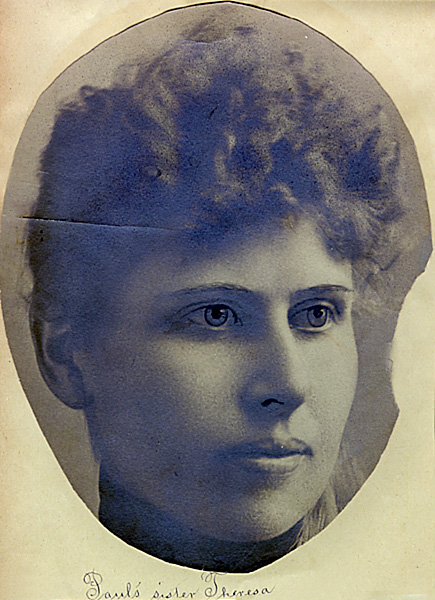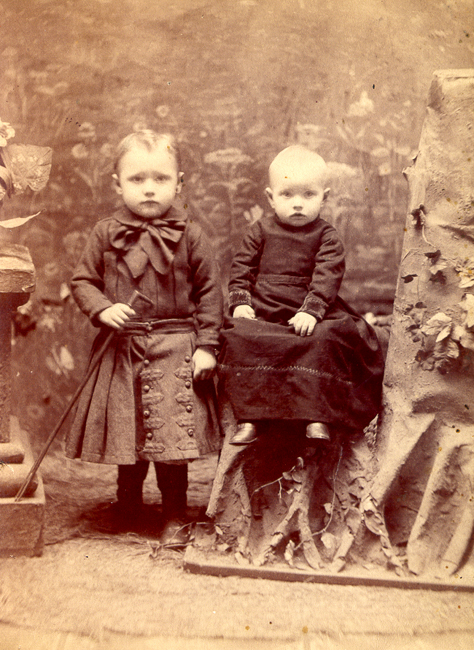Before there was a sister Carrie, there was Theodore Dreiser's sister Emma. Born 27 August 1871, Dreiser was the ninth child amid a clan that comprised ten surviving siblings. Among his five older sisters were Mame, Emma, Sylvia, and Theresa, young women who bristled under their father's strict moral demands as well as the economic and social limitations resulting from his business failures. In the mid-1880s, when Dreiser was a teenager and his family had left Chicago to live in Warsaw, Indiana, not only did the unwed Sylvia become pregnant by the son of a wealthy family in town, but Emma had also lived the events that would form an essential aspect of the plot for the novel Sister Carrie. Having left her Chicago lover, who was an architect, Emma took up with L. A. Hopkins, the urbane cashier of Chapin & Gore, a fashionable bar in downtown Chicago. Although initially unaware that Hopkins was already married, she nevertheless agreed to elope with him to Montreal, only to learn once they arrived that he had stolen $3,500 from the safe at Chapin & Gore and they were fugitives. Eventually he returned the money, save $800, with the hope that he would not be prosecuted, and the couple fled to New York.
Dreiser's coming of age in a family on hard economic times, which entailed frequent moves and even the splitting up of the family, left an indelible imprint: the social embarrassment and alienation felt by Dreiser, as well as the unfairness of it all, haunted him for the rest of his life. Yet it also provided him with the sensibility as a novelist to present his characters honestly but not necessarily judge them. Their strengths and weaknesses receive equal treatment and the social and economic conditions that shape their lives remain at the center of his re-creation of their stories and milieu. Dreiser was torn by the actions of his sisters: on the one hand, he agreed with his father that their behavior was shameful (if for no other reason than the public scandal and gossiping it engendered), but he was also the one who "rescued" Emma from Hopkins years later in New York (the two were still together but Hopkins was unemployed and urging Emma to rent rooms to prostitutes). Through a pretext that he was leaving New York for Pittsburgh, Dreiser invited Emma to join him there. She told Hopkins that she was accepting her brother's offer; she moved, however, into a small apartment only a few blocks away in Manhattan.
Fig. 1: Despite the melodramas of her youth and young adulthood, which provided the raw material for some of Dreiser's tales, Emma Dreiser ultimately tried to live a respectable, middle-class existence, first with Hopkins, then later with her second husband, John Nelson. Dreiser, in fact, published the second volume of his autobiography (entitled A Book About Myself) first, fearing the upset that the first volume would create with Emma, as well as with his other sisters Mame and Sylvia. It appears that the title of Dreiser's first novel derives from the affectionate way that Emma would sign her letters to him: "I remain your/ Sister Emma."
Fig. 2 - Fig. 3: Theodore Dreiser's father was a German immigrant who arrived at Ellis Island in 1844, a weaver and wool-dyer by trade. Although he met with some financial success in the mill business, a series of accidents left Dreiser's father impoverished and reduced to a mere laborer by 1871, the year of Theodore's birth. John Paul Dreiser's religious fanaticism (he was Catholic) only increased as time went on and troubles grew. Superstitious, he imparted this trait to Theodore. In the midst of Dreiser's despair over the woeful promotion and mixed reception of Sister Carrie, his father died on Christmas day, 1900, at the home of Theodore's sister, Mame, in Rochester, New York. John Paul Dreiser was buried in Chicago next to his wife, where son Paul was later to be placed.
Fig. 4: First edition inscribed by Dreiser to "To my dear Father -- with a sort of inheritance provided by which I manage to inscribe it also to Mame and Austin. If any of you fail to read and praise it the book reverts to me. With love (according to precedence) -- Theodore."
Fig. 5: Theodore Dreiser's mother was born in a log cabin on 8 May 1833, just a few miles outside of Dayton, Ohio. The daughter of Mennonites who were vigorously anti-Catholic, Sarah eloped with John Paul Dreiser and was married on 1 January 1851. Their first three children died young, but the couple managed to produce ten who survived to adulthood. Dreiser's unwavering love for his mother is legendary: "I was always a mother child," he wrote, "hanging to her skirts as much as I was permitted until I was seven or eight years old." Supportive of all her children's ambitions, she remained non-judgmental towards them and thereby represented to Dreiser the true ideal of home and shelter.
Fig. 6: The first page of this essay about his mother reveals Dreiser's strained start: "I have often wondered whether it is possible for a son or daughter to present his or her mother truthfully in letters -- to make of her a portrait -- critically & hence detached." In a subsequent section of the tribute, he writes: "to realize, but dimly even then, the nature of the storms that she had weathered, the losses she had endured, the disillusionments she had survived. And yet all this with a faith in the worthwhileness of life that now strikes me as not a little remarkable."
Fig. 7: One of Dreiser's five sisters, Theresa was one of three sisters who had taken an apartment in Chicago, where Theodore moved in the summer of 1884. Although Dreiser loved the city and its vitality, the stay proved short-lived, once his father also relocated there. All three young women in that apartment were involved with suitors in relationships of dubious respectability. Theresa, however, ultimately married Ed Davis, a scenery painter who had once given Theodore a job in hopes of winning favor with her. In October of 1897 she was instantly killed by a train while crossing a track on her bicycle in Chicago: it was only her thirty-second year of life.
Fig. 8: The earliest known photograph of Theodore Dreiser depicts the two youngest children of John Paul and Sarah Dreiser in a studio portrait typical of the time. Inseparable as youngsters, they were dubbed "Frassus" and "Fitus" by eldest brother Paul. Ed and Theodore, though, were quite different in nature: the former athletic, the latter contemplative and an avid reader. Of Theodore and their childhood together, Ed has written: "We talked and talked for hours. It was amazing the way everything and everyone in the world interested him. He wasn't aggressive or anxious in the same way children are. . . . he was interested strongly in people, what they were doing and thinking."
